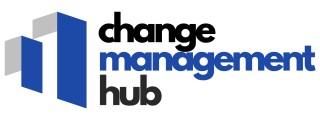
Understanding enhanced transfer value in organizational change
What does enhanced transfer value mean in organizational change?
Enhanced transfer value is a concept that often arises during organizational change, especially when discussing pension schemes and employee benefits. In the context of change management, it refers to the increased value offered to members of a pension scheme when they are considering transferring their benefits out of a defined benefit scheme into another arrangement, such as a defined contribution scheme. This process is particularly relevant for those approaching pension age, considering retirement income options, or evaluating the impact of public sector reforms.
When organizations undergo significant transitions—like mergers, restructuring, or the introduction of new benefit schemes—employees may be offered an enhanced transfer value as an incentive to move their pension benefits. This can result in a higher lump sum or improved pension income compared to the standard transfer value. The goal is to provide members with greater flexibility and potentially more tax free benefits, while also helping the organization manage long-term liabilities associated with defined benefit pensions.
Why is enhanced transfer value important for members and organizations?
For members, an enhanced transfer value can mean more options for retirement planning, including the possibility of accessing a larger tax free lump sum or tailoring their retirement income to better suit their needs. For organizations, offering enhanced transfer values can help reduce the risks and costs associated with maintaining legacy benefit schemes, especially in the public sector or for large employers with significant pension obligations.
- Pension transfers: Members may transfer their benefits to another scheme, often after receiving transfer advice from financial advisers.
- Defined benefit vs. defined contribution: The choice between staying in a defined benefit pension or moving to a defined contribution scheme can have lasting effects on retirement income and benefits.
- Tax implications: Enhanced transfer values may offer opportunities for tax free benefits, but also require careful consideration of tax rules and retirement planning.
Understanding the mechanics and implications of enhanced transfer value is crucial for anyone involved in change management, whether you are a scheme member, a financial adviser, or a decision-maker in an organization. It is also essential to consider the safety and security of members during large-scale change initiatives. For more on this, explore ensuring safety in large-scale change management.
Key factors that influence transfer value during transitions
What Shapes the Value of Pension Transfers?
When organizations go through change, the transfer value of a pension scheme can become a central concern for both employers and members. Several factors influence how much value is actually transferred during these transitions. Understanding these elements is crucial for anyone considering a pension transfer or seeking advice on maximizing retirement income.
- Scheme Structure: The type of pension scheme—defined benefit or defined contribution—directly impacts transfer values. Defined benefit schemes typically offer a guaranteed income, while defined contribution schemes depend on investment performance. The calculation of transfer values will differ based on these structures.
- Market Conditions: Economic factors such as interest rates and inflation affect the value of pension benefits. For example, lower interest rates can increase the transfer value offered by a defined benefit pension scheme, as the cost to provide the same income in retirement rises.
- Member Circumstances: Age, health, and retirement plans all play a role. Someone closer to pension age or with specific retirement income needs may see different benefits from transferring schemes compared to others.
- Scheme Funding Levels: The financial health of a benefit scheme influences the transfer value. Well-funded schemes can offer higher values, while underfunded schemes may limit options or reduce benefits.
- Tax Considerations: Tax rules, such as the ability to take a tax free lump sum, can affect the perceived value of a pension transfer. Understanding the tax implications is essential before making decisions.
- Regulatory Environment: Changes in pension regulations or public sector policies can shift how transfer values are calculated and what benefits are available to members.
- Access to Financial Advice: Professional transfer advice from financial advisers ensures members understand the risks and benefits, helping them make informed decisions about their pension transfers.
These factors interact in complex ways, and their impact can vary depending on whether the transfer is within the public sector, between defined benefit schemes, or to a defined contribution arrangement. For a deeper look at how professional organizations support change management in this context, you can read about the role of the National Staff Development Council in change management.
Ultimately, understanding what shapes transfer values helps members and organizations maximize pension benefits and retirement income during periods of change.
Common barriers to achieving enhanced transfer value
Obstacles That Limit the Full Potential of Transfer Value
While organizations aim to maximize the impact of enhanced transfer value during change management, several barriers can prevent the full realization of these benefits. Understanding these obstacles is crucial for anyone involved in managing pension schemes, defined benefit transfers, or broader organizational transitions.
- Lack of Clear Communication: Many members and stakeholders struggle to grasp the implications of transferring scheme benefits, especially when it comes to defined benefit pension transfers. Without transparent advice and accessible information, confusion can lead to poor decisions and missed opportunities for enhanced value.
- Complexity of Pension Schemes: The intricacies of benefit schemes, such as defined contribution versus defined benefit, create challenges for members seeking to optimize their retirement income. Navigating tax free lump sum options, death benefits, and pension age requirements often requires expert financial advisers, yet not all members have access to quality transfer advice.
- Regulatory and Tax Constraints: Pension transfers are subject to strict regulations and tax implications. These rules can limit flexibility, especially for public sector schemes or those with unique benefit structures. Members may find that the value of their pension income is reduced by unforeseen tax liabilities or transfer penalties.
- Resistance to Change: Organizational culture can be a significant barrier. Employees and scheme members may be wary of transferring schemes or adopting new benefit pension structures, fearing loss of income or security in retirement. This resistance can stall or undermine efforts to enhance transfer value.
- Insufficient Support and Guidance: Without robust support from financial advisers or scheme administrators, members may not fully understand the benefits or risks associated with pension transfers. This gap can result in suboptimal choices, particularly when considering enhanced transfer value options.
For organizations navigating these challenges, it is essential to address both the technical and human aspects of change. Overcoming these barriers often requires a coordinated approach, combining clear communication, expert advice, and a supportive culture. For a deeper dive into the complexities and solutions around business transformation, you may find this resource on navigating the challenges of digital transformation particularly relevant.
Practical strategies to improve transfer value
Building a Strong Foundation for Enhanced Transfer Value
Organizations aiming to maximize the impact of enhanced transfer value during change management must focus on practical, actionable strategies. These approaches help ensure that members of a pension scheme or benefit scheme experience a smooth transition, while also protecting the value of their pension benefits and retirement income.- Clear and Transparent Communication: Consistent updates about transfer values, scheme changes, and the implications for defined benefit or defined contribution pensions are essential. Members need to understand how transferring scheme options will affect their pension income, tax free lump sum, and overall retirement benefits.
- Access to Qualified Financial Advice: Providing free or subsidized transfer advice from regulated financial advisers can help members make informed decisions about pension transfers. This is especially important for those considering moving from a defined benefit pension to a defined contribution scheme, where the risks and potential benefits differ.
- Streamlined Administrative Processes: Simplifying the paperwork and approval steps for pension transfers reduces delays and confusion. Efficient processes support members in accessing their enhanced transfer value quickly, whether they are approaching pension age, considering early retirement, or managing a transfer following a life event such as death.
- Personalized Member Support: Tailoring support to individual needs—such as explaining the impact of tax, death benefits, or public sector scheme rules—can help members fully understand their options. This approach builds trust and confidence in the change process.
- Regular Training for Staff: Ensuring that HR teams and scheme administrators are up to date on the latest pension transfer regulations and best practices allows them to provide accurate, timely information to scheme members.
Leveraging Technology and Data
Modernizing systems to track and manage transfer values can significantly improve outcomes. Digital tools can automate calculations for enhanced transfer value, flag potential errors, and provide members with real-time updates on their pension benefits. This not only increases efficiency but also reduces the risk of mistakes that could affect retirement income.Encouraging Member Engagement
Members who are actively engaged with their pension scheme are more likely to make decisions that maximize their benefits. Hosting workshops, webinars, or Q&A sessions about pension transfers, tax free lump sums, and retirement planning can empower members to take control of their financial future. By implementing these practical strategies, organizations can help members achieve the best possible outcomes from their pension transfers and enhance the overall value delivered during periods of change.Measuring the success of transfer value enhancement
How to Track Progress and Outcomes
Measuring the success of enhanced transfer value in change management is essential for organizations, scheme members, and financial advisers. It helps ensure that the intended benefits of pension transfers and scheme transitions are realized, and that the value delivered aligns with expectations. Here are some practical ways to assess outcomes:
- Compare projected and actual transfer values: Review the difference between the estimated enhanced transfer value and the final value received by the member. This helps determine if the transfer advice and process delivered the expected financial benefits.
- Monitor member satisfaction: Collect feedback from members who have completed a pension transfer or moved between schemes. Satisfaction surveys can reveal if the process was clear, if advice was helpful, and if members feel confident about their retirement income prospects.
- Assess retirement income outcomes: Analyze whether members who transferred from a defined benefit pension scheme to a defined contribution scheme are achieving their desired pension income and tax free lump sum options at retirement age.
- Evaluate adviser performance: Track the quality of transfer advice provided by financial advisers. This includes reviewing compliance with regulations, accuracy of information about scheme benefits, and the suitability of recommendations for each member’s situation.
- Review scheme-level metrics: For public sector and private benefit schemes, monitor aggregate data such as the number of pension transfers, average transfer values, and the proportion of members opting for enhanced transfer options. This can highlight trends and areas for improvement.
Key Metrics to Consider
| Metric | Why It Matters |
|---|---|
| Average transfer value increase | Shows the financial impact of enhanced transfer offers compared to standard values |
| Member uptake rate | Indicates how many eligible members choose to transfer, reflecting confidence in the process |
| Post-transfer retirement income | Measures if members achieve their expected income and benefits after transferring |
| Incidence of transfer-related complaints | Helps identify issues with advice, communication, or scheme administration |
| Tax efficiency of transfers | Assesses if members are maximizing tax free benefits and minimizing unnecessary tax liabilities |
By focusing on these metrics and feedback mechanisms, organizations and advisers can ensure that enhanced transfer value strategies are truly benefiting scheme members and supporting better retirement outcomes. Regular measurement also supports continuous improvement in pension scheme management and transfer advice practices.
Real-world examples of enhanced transfer value in action
Case studies: Enhanced transfer value in practice
Organizations across various sectors have faced the challenge of maximizing the impact of enhanced transfer value during periods of change. By examining real-world examples, we can better understand how different approaches to pension transfers, scheme management, and member communication can drive successful outcomes.
Public sector pension schemes adapting to reform
When public sector organizations undergo pension reform, members often have the option to transfer their defined benefit pension to a defined contribution scheme. In one notable case, a large public sector employer introduced an enhanced transfer value offer to encourage members to consider transferring their benefits. The organization provided clear transfer advice, transparent communication about the value and risks, and access to free financial guidance. As a result, members were empowered to make informed decisions about their retirement income, and the scheme saw a smoother transition with fewer disputes and higher satisfaction rates.
Private sector: Supporting members through complex transfers
In the private sector, a multinational company faced the challenge of closing its defined benefit scheme. To support members, the company offered an enhanced transfer value, allowing individuals to move their pension benefits to a defined contribution plan or another scheme. The process included personalized pension transfer advice, detailed breakdowns of transfer values, and education on tax-free lump sum options. Financial advisers played a key role in helping members understand the long-term impact on their pension income and retirement benefits. This approach led to a higher uptake of transfers and reduced uncertainty among scheme members.
Lessons learned from benefit scheme transitions
- Clear communication: Members need accessible information about transfer values, tax implications, and retirement options.
- Access to advice: Offering free or subsidized transfer advice helps members make confident decisions about their pension benefits.
- Member engagement: Proactive engagement, including workshops and one-on-one sessions with financial advisers, increases understanding and trust in the process.
- Monitoring outcomes: Tracking the impact of enhanced transfer offers on member satisfaction and scheme stability is essential for continuous improvement.
These examples highlight the importance of a holistic approach to managing enhanced transfer value. By focusing on communication, advice, and member support, organizations can help individuals maximize their pension benefits and achieve better retirement outcomes when transferring schemes.













